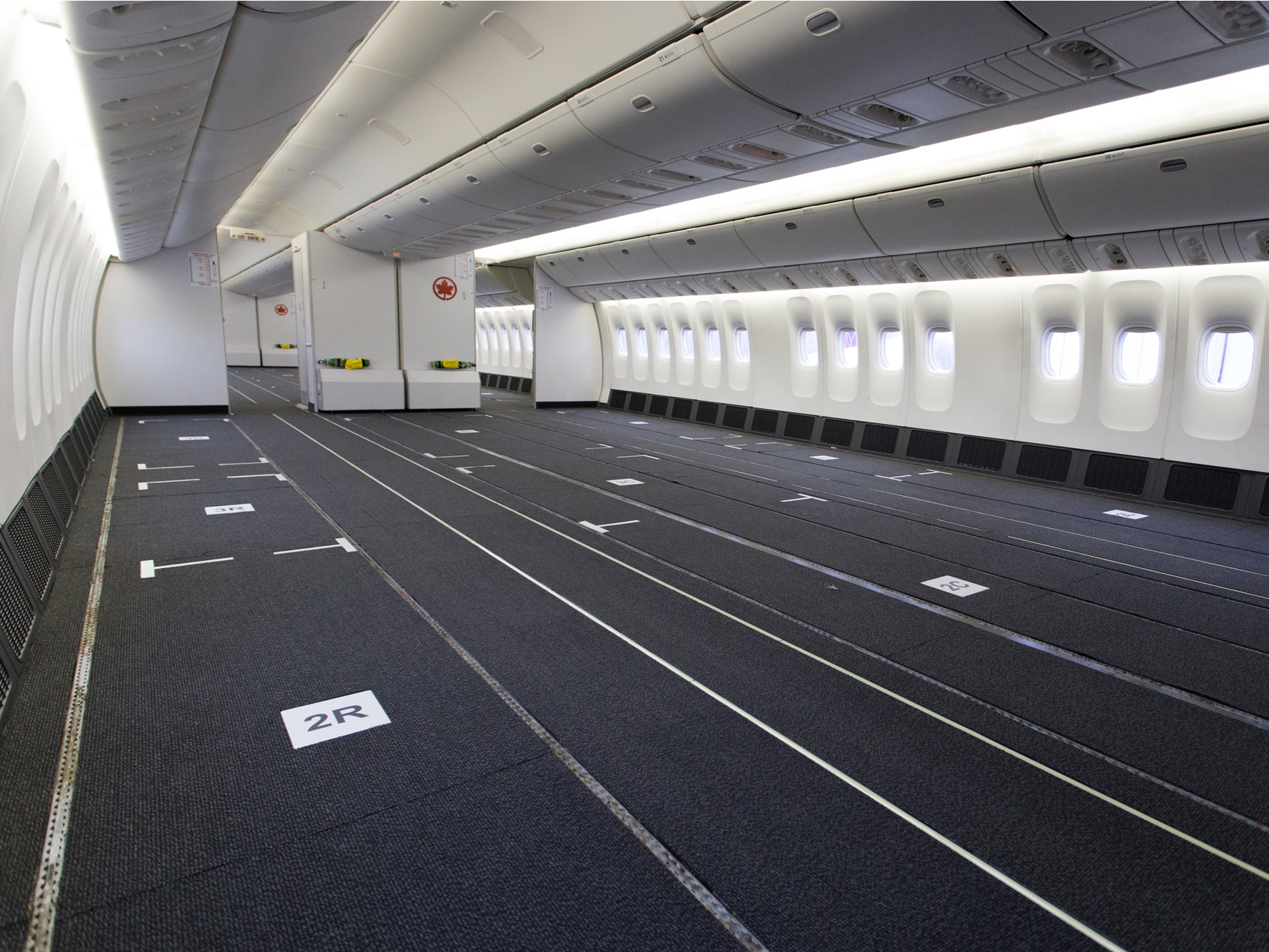- Air Canada is taking its cargo-only flights to the next level with Boeing 777-300ER and Dash 8-400 aircraft being reconfigured to hold cargo in passenger cabins.
- The process entails removing economy and premium economy cabin seats on the 777 to store additional cargo, bringing the aircraft’s total freight capacity to nearly 90 metric tons.
- The Dash 8-400 conversions were added later in April as the demand for regional freight transportation grew.
- Visit Business Insider’s homepage for more stories.
Air Canada, like many global airlines, decided to make the shift to cargo-only flights in March once the demand for passenger travel dried up.
Without a dedicated cargo fleet, the Canadian flag carrier began flying its passenger jets with underbellies full of freight and empty passenger cabins above, until the potential of the underused cabins was realized.
To maximize cargo capacity on its largest jets, three Boeing 777-300ER planes have had their passenger seats removed to create more space for potential freight. While airliners are no stranger to cargo conversions, as seen with many of the freighters flying today, the temporary setups preserve the cabin’s integrity while the cargo is flown.
The trio is deploying to global destinations primarily in Europe and Asia to bring home well-needed medical supplies as Canada weathers the COVID-19 pandemic that’s hit close to home with nearly 50,000 reported cases, including from the First Lady of Canada, Sophie Grégoire Trudeau.
While the wide-bodies fly globally to bring freight back to Canada, the airline is also converting smaller Bombardier Dash 8-400 turboprop aircraft into freighters to fly packages regionally. Operated by regional partner Jazz Aviation, the 74-seat all-economy aircraft will now completely cleared out and re-purposed to fly boxes instead of people.
Take a look inside Air Canada's new Boeing 777-300ER and Bombardier Dash 8-400 freighters.
Three of Air Canada's Boeing 777-300ERs, the carrier's largest plane, have already undergone the reconfiguration to fly freight in both passenger cabins and cargo holds.

Source: Air Canada
The freighters aid the carrier's goal of at least 20 cargo-only flights per week moving forward. The three reconfigured 777s joined the existing fleet of standard configuration 777 and 787 Dreamliner aircraft flying primarily to Europe and Asia in mid-April.

Source: Air Canada
Inside the aircraft, economy and premium economy class seating will be removed to house the cargo, to be secured using nets.

Source: Air Canada
Each aircraft with have four cargo zones with the business class cabins remaining untouched with seats left intact. The maximum weight of each zone varies but hovers around 3,000 pounds.

Source: Air Canada
The conversions were performed by specialist Avianor at the firm's facility at Montreal's Mirabel Airport. The cabin reconfiguration specialist designed and implemented the concept in six days, quickly clearing it with Canada's aviation regulator Transport Canada.

Source: Air Canada
Lightweight boxes will be placed in the cabin with heftier cargo being loaded into the hold below.

Source: Air Canada
As no major modifications beyond the seat removal are being performed, the cabin is limited in what it can carry.
The new configuration allows the 777 aircraft to fly nearly 90 metric tons of cargo across both platforms, the equivalent of 9 million masks or enough to cover just over a fourth of Canada's population.

Source: Air Canada
Loading the passenger cabin isn't as easy as the hold, however, since all boxes must be able to pass through the narrower boarding doors that aren't designed for freight.

After seeing success with the converted 777s, Air Canada turned to a smaller aircraft to fly freight as well, the Bombardier Dash 8-400.
Source: Air Canada/Jazz Aviation
Though it typically flies short-haul regional flights with a maximum of 74 passengers, the converted turboprop can now haul 18,000 pounds of cargo.
Source: Air Canada/Jazz Aviation
Boxes can be loaded both in the passenger cabin and existing cargo hold in the rear of the aircraft. Exactly 13 aircraft in the Air Canada Express fleet operated by Jazz Aviation will receive the modifications.
Source: Air Canada/Jazz Aviation
Air Canada isn't the first carrier to hold cargo in its passenger cabin but is one of the few to reconfigure the entire aircraft to do so.

Shanghai, Tokyo, and Boston are just some of the destinations frequented by the new freighters, which have nearly returned to their pre-pandemic flying schedules with the new payload onboard.

Source: FlightRadar24

